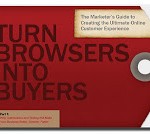 Some Internet marketing specialists of ten say that a product recommendation engine often serves as a “mouthpiece” for big brands, because the engine invariably refers clients back to products and services that large companies sell or provide.
Some Internet marketing specialists of ten say that a product recommendation engine often serves as a “mouthpiece” for big brands, because the engine invariably refers clients back to products and services that large companies sell or provide.
But that’s not the case; even if you have a small or mid-size business, you still can take advantage of the engine to increase sales and overall conversions. But that doesn’t happen overnight, though. The process is not complicated; you can do it on your own, but reach out to a specialist or use an online tool that will help you implement these traffic conversion tools.
1. Know Your Inventory—and Pick the “Winning” Items
Before installing a product recommendation engine on your website, know your inventory. Go through item categories and figure out those that most likely are going to draw enormous traffic on a specific day, time of the day, or hour.
Those are your “winning” items, the 20% of products or services that are going to generate 80% of revenue within that specific time frame.
For example, if you sell shoes, you can pick a specific type of footwear that might produce blockbuster sales on, say, Mother’s Day, or female denim that could sell well on Valentine’s Day.
The bottom line is: know your customers and the season, and select the winning items accordingly.
2. Assess Your Website
Determine whether your website has the technological backbone needed to handle high traffic, as well as the right security levels that should be in place to safeguard customers’ data.
If you want to operate an e-commerce portal and make money while doing it, you need to invest in IT security — if you haven’t already done so.
You would be leaving money on the table — for rivals to collect — if you had a good product recommendation engine that does what it is supposed to do. But you can not close the deal and increase your overall conversion rate.
3. Create an Ergonomic Website—and Insert the Engine Properly
Make your website sleek, attractive and user-friendly. When it comes to website optimization, ergonomics means user-friendliness — that is, the effort you make to provide your existing customers and occasional patrons the best shopping experience they have ever had.
Once you deploy an ergonomic website, place the product recommendation engine in a highly visible location. Portals that have such engines typically place them on home pages, giving users the opportunity to rate products and services and suggest potential substitutes or similar items to other users.
4. Track User Activity
To take advantage of product recommendation engines, track user activity. Monitor things like time spent reviewing a specific item; whether the item was subsequently bought; shopping patterns in terms of frequency, time and amount spent; user gender, age and profession; and shopper location.
This onsite surveillance — which is further enhanced by the product recommendation engine—helps you constantly shuffle elements in your value proposition in terms of products and services, a move that ultimately will yield higher revenues and repeat business.
This is because your supply will always match your customers’ demands — if not exceed their expectations.
5. Interact With Customers
Create opportunities to interact with your patrons, and do so as frequently as possible. Figure out innovative, effective ways to cultivate client relationships to woo new ones and retain the existing ones.
Effective yet affordable ways to do that include setting a blog, leaving a “Comments” or “Review” box underneath each item, implementing periodic surveys, and enabling clients to leave feedback on your company’s social-media pages.
The idea here is to make money — a lot of it — by picking up the slack that some companies leave when they no longer care of the customer once a sale is made or a service provided.
For example, you can implement a rewards system whereby customers who post a lot of reviews receive incentives, such as rebates on future purchases.
Summary
Product recommendation engines help you effectively increase sales by expanding the number of customers who ultimately buy the same item or item category.
To take advantage of the operational manna that the engine represents, you should do your homework and make sure your website can handle increased traffic along with the mishmash of IT requirements that things like blog, product review and comments bring onto a website.
To generate sales through a product recommendation engine, know your product portfolio, interact with customers often, track user activity, and create a website that is as user-friendly as possible.
Ruben Corbo is a freelance writer for many different topics including internet marketing, technology, gaming, music, and more. To find out more about Product Recommendation Engines, visit Maxymiser.com
